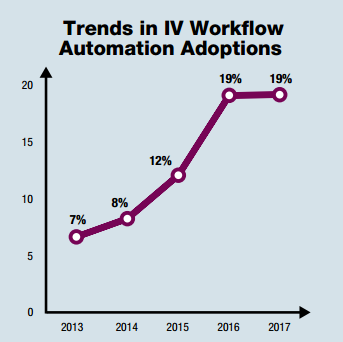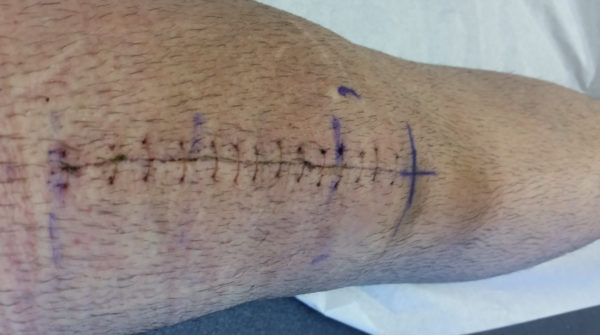“Why do you look at the speck of sawdust in your brother’s eye and pay no attention to the plank in your own eye?” — Matthew 7:3 (NIV)
So much happens each and every week, and it’s hard to keep up sometimes. Here are some of the tabs that are open in my browser this morning along with some random thoughts…

The Hitman’s Bodyguard was #1 at the box office last weekend, making it two in a row. It’s a decent movie. Not as funny as one might think, or hope. My wife and I both thought the same thing, Ryan Reynolds playing Deadpool without the costume.
Speaking of movies, this Summer hasn’t been kind to the Hollywood bottom line. From the New York Post: “Heading into the next-to-last weekend of the summer movie season, the US box office was running 13.4 percent below last summer, according to comScore.” Take it from someone that likes watching movies on the big screen, this summer has indeed been lackluster. The Mummy wasn’t very good. Transformers 5 was bad. Planet of the Apes was too dark and depressing. Atomic Blonde had some awesome fight scenes, but was otherwise meh. Dark Tower made me look at my watch and wonder “how long is this thingâ€. And the above mentioned Hitman’s Bodyguard was just ok. Wonder Woman was the cream of the crop, leaps and bounds better than any other movie this summer. It makes me desperate for Justice League.
Lest we forget just how powerful Mother Nature can be, Houston, Tx is literally under water following Hurricane Harvey.
Alabama is sitting pretty at #1 in this year’s first preseason Top 25. And there they will sit until someone knocks them off. I think it’s going to be a great year for college football. As for the NFL, not so much. I’ve lost almost all interest in the NFL. I haven’t watched a single pre-season quarter.
The NSAS Flickr site has some pretty cool images from the eclipse.
It appears that “banana bags†are no longer the treatment of choice for management of alcohol-associated vitamin and electrolyte deficiencies. Go figure. The practice of using banana bags has been called into question secondary to time to infuse, cost:benefit, etc. “Based on the published literature, for patients with a chronic alcohol use disorder admitted to the ICU with symptoms that may mimic or mask Wernicke’s encephalopathy, we suggest abandoning the banana bag [in favor of different therapy].” — Flannery A, Adkins D, Cook A. Unpeeling the Evidence for the Banana Bag. Critical Care Medicine. 2016;44(8):1545-1552. doi:10.1097/ccm.0000000000001659.
Calcium Gluconate is the calcium salt of gluconic acid, an oxidation product of glucose. It’s commonly used in healthcare, even more so now that Calcium Chloride is hard to get. The 10% solution, pictured below, is supersaturated and stabilized by the addition of calcium saccharate tetrahydrate. The problem is that supersaturated solutions are prone to precipitation. I was basically unaware of the problem until I found this bottle. I Tweeted about it and received multiple responses indicating that “it happens all the time”. In my 20 years, I don’t recall ever seeing this before. Some propose that it’s the warm California weather that prevents it from happening. Maybe.

In the wake of what went down in Charlottesville, some groups were kicked off the internet. For example, Cloudflare Inc., an internet security service, cut ties with the neo-Nazi website the Daily Stormer. While everyone seems to agree that these people are aholes, I think we’re getting into some pretty dangerous territory. Even Cloudflare’s CEO, Matthew Prince thinks so, and he’s the one who pulled the plug on Daily Stormer. According to Prince he “Literally… woke up in a bad mood and decided someone shouldn’t be allowed on the internet. No one should have that powerâ€. He’s right, no one should have that power. Everyone believes in the right to free speech and having their own opinion until someone else’s opinion doesn’t agree with their own. At that point rational thought goes right out the window. Whether I disagree with Daily Stormer’s views is irrelevant. I have no idea what their views are. I’ve never been to their site. I am not a neo-Nazi nor do I believe in their cause, at all. Until the Charlottesville incident I had never even heard of them. However, that’s not the point. What if someone woke up one day and decided I shouldn’t be allowed on the internet because of my views? That’s some scary stuff right there. Think about it.
There’s an interesting article at Ars Technica about the slippery slope we’re on with internet censorship. Â
Android Authority: “The official Android 8.0 release is here: Android Oreo officially arrived Monday August 21 during the solar eclipse. The over-the-air (OTA) update began rolling out immediately to supported Pixel and Nexus devices and factory images were posted on the Android Developers’ site the same day.†– Android 8.0 – Orea – will include the following new features: Picture-in-picture, Notification dots, simplified autofill framework to simplify how users set up a new device and synchronize passwords, system optimizations and background limits, auto-sizing textview, adaptive icons, shortcut pinning, and a few things under the hood that are over my head. My wife’s Pixel XL received the update a couple of days ago. I’m jealous.Â
The Essential Phone is finally available, sort of.  While I appreciate the engineering that went into the device — and it is beautiful — the reviews have all said the same thing, it’s a beautiful phone that’s not quite up to par in certain key areas.  Not to mention, the company has suffered from shipping problems and at least one email slip up. As much as I link new toys, there’s just nothing there to entice me.
IFA 2017 is going on in Berlin as we speak. I love reading about all the cool stuff that shows up at IFA each and every year. In years where I’m thinking about buying a new laptop — like this year — I typically wait to see what drops at IFA before making a decision.
The Samsung Note 8 was recently announced. My Note 5 was the best smartphone on the market when I bought it, and it still kicks butt. From what I’ve seen and read, the Note 8 is better in almost every way, with a couple of minor exceptions. It looks like Samsung has the best smartphone on the planet, again. For your reading pleasure: 10 Reasons you’ll love the Note 8.Â
Chrome Unboxed: Chrome Tip To Help Those Who Use Lots Of Tabs: “Take your files app, for instance: you can hold CTRL and select multiple items or hold SHIFT and select a range of items with just a couple clicks….That’s right, you can hold CTRL and select multiple tabs. After this, you can grab any of the selected tabs and move them around as a group. Likewise, if you click one tab, hold SHIFT, and then click another tab, all the tabs between are selected and can be moved as a group.†– I’m a longtime user of Chrome and had never heard of this tip before. Very useful.Â
Speaking of Chromebooks, I’m thinking about giving them another try. Even after my recent failure, I’m still drawn to them. This time around it’ll be either a Samsung Chromebook Plus or Asus Chromebook Flip C302, I think.The Samsung Chromebook Plus has the edge, but the stupid thing doesn’t have a backlit keyboard. Then again, I’ll wait until IFA is over before making any decisions.Â
I continue to be amazed by the quality of images captured by smartphones. The image below was taken with my two-year old Samsung Galaxy Note 5 while out walking my dogs.Â

Have a great weekend, everyone.






